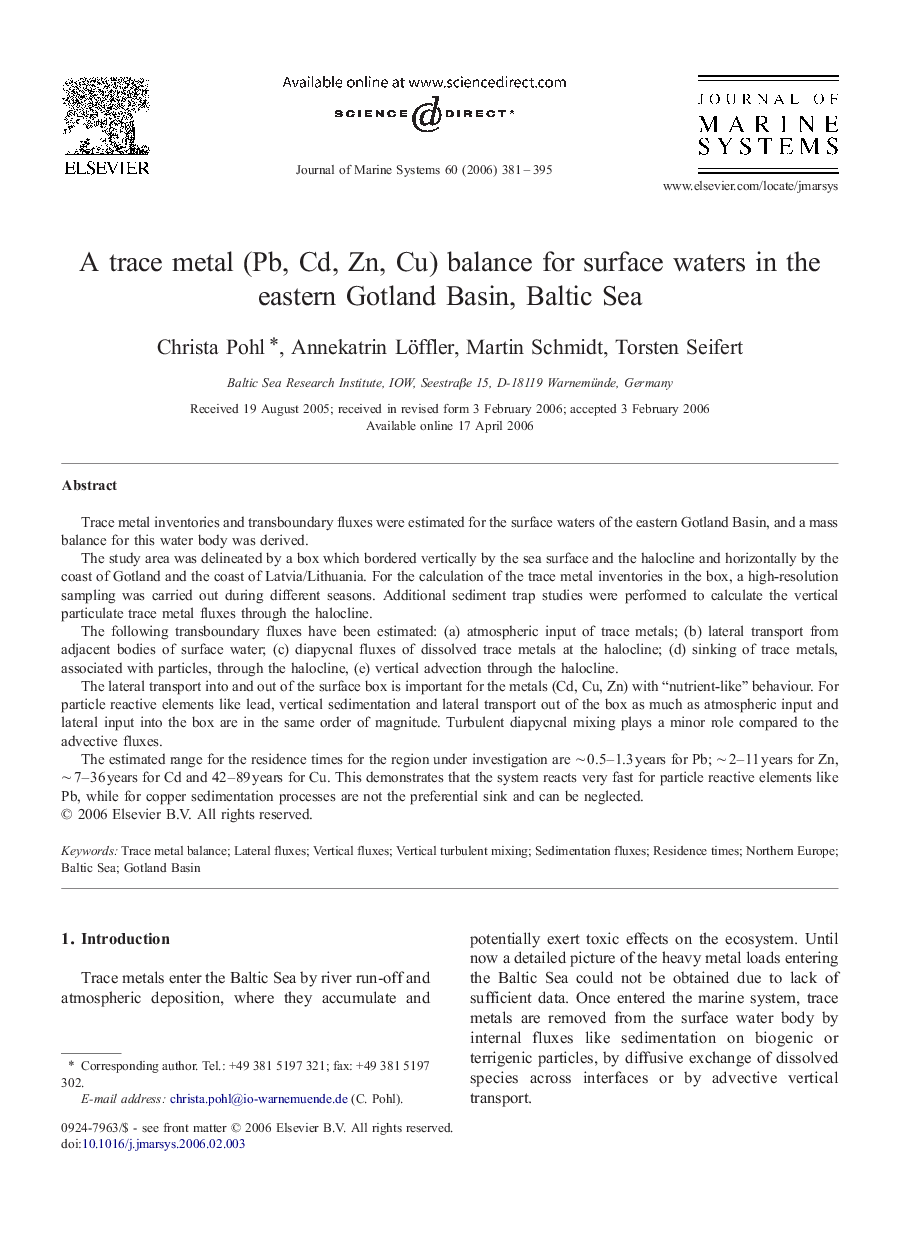| Article ID | Journal | Published Year | Pages | File Type |
|---|---|---|---|---|
| 4549419 | Journal of Marine Systems | 2006 | 15 Pages |
Trace metal inventories and transboundary fluxes were estimated for the surface waters of the eastern Gotland Basin, and a mass balance for this water body was derived.The study area was delineated by a box which bordered vertically by the sea surface and the halocline and horizontally by the coast of Gotland and the coast of Latvia/Lithuania. For the calculation of the trace metal inventories in the box, a high-resolution sampling was carried out during different seasons. Additional sediment trap studies were performed to calculate the vertical particulate trace metal fluxes through the halocline.The following transboundary fluxes have been estimated: (a) atmospheric input of trace metals; (b) lateral transport from adjacent bodies of surface water; (c) diapycnal fluxes of dissolved trace metals at the halocline; (d) sinking of trace metals, associated with particles, through the halocline, (e) vertical advection through the halocline.The lateral transport into and out of the surface box is important for the metals (Cd, Cu, Zn) with “nutrient-like” behaviour. For particle reactive elements like lead, vertical sedimentation and lateral transport out of the box as much as atmospheric input and lateral input into the box are in the same order of magnitude. Turbulent diapycnal mixing plays a minor role compared to the advective fluxes.The estimated range for the residence times for the region under investigation are ∼ 0.5–1.3 years for Pb; ∼ 2–11 years for Zn, ∼ 7–36 years for Cd and 42–89 years for Cu. This demonstrates that the system reacts very fast for particle reactive elements like Pb, while for copper sedimentation processes are not the preferential sink and can be neglected.
